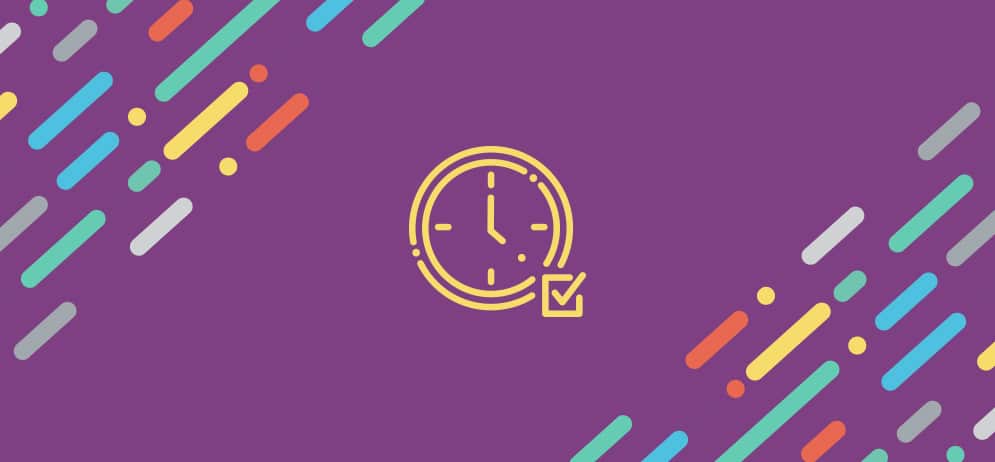Note: This post was written in collaboration with our friends at Touchpoint, experts in time collection and partners with Frontline in serving the education community.
If your district manually tracks employee hours using paper timesheets, you might feel like climbing the walls. Anyone who has ever been responsible for monitoring, calculating, and managing payroll knows how time consuming it is, how meticulous the task is — and how valuable a reliable digital system can be.
Accurate time collection is the foundation of any time and attendance system. Without that, it would be impossible to correctly determine hours worked and pay workers accurately for their time. School districts looking for a quality time collection system should make sure it’s supported by three solid pillars. It must be seamless for administrators, simple for IT, and easy for employees.
Seamless for Administrators
As if district administrators didn’t already have enough challenges on their plates, complicated COVID-related questions keep cropping up. A paperless and automated time collection system means one less thing to worry about.
Payroll administrators count on having their data well organized and well structured. When that data flows correctly, reporting and approvals are reliable and timely. With an efficient and accurate system, the payroll process will not spring unwanted surprises.
With digital timestamps, employees can’t simply average their hours or habitually write “9-5” on their daily timesheets. Implementing this single change can translate into substantial savings for payroll budgets each year. And using a digital time collection system means data is more accurate and available. A system could include the location of time collection, the device used, and geolocation (if mobile) for enhanced accountability.
And of course, getting rid of paper means less data entry and more accuracy. Compiling timesheets and running payroll can go from taking two weeks to just two days!
Simple for IT
IT techs are swamped — no surprise, right? Most districts have far fewer IT resources than a similarly sized corporate setting would. That means IT departments need to get creative about how they fight bottlenecks brought on by too many support requests. One huge advantage is to have a simple and efficient plug-and-play system that doesn’t require R&D or lengthy programming and setup plans.
This year, you can’t talk about technology without looking at how school closures threw a wrench into the machinery. IT teams across the country are working frantically to support thousands of teachers with remote technology in the classroom. Administrators and hourly staff working from home or on-site need help, too. That increased demand puts a tremendous burden on a traditionally overworked department.
Any IT tech will tell you that a system that can be maintained or supported remotely makes a difference. Since time collection is complex, a system that is stable and dependable will reduce the workload, allowing technology teams to provide more assistance in classrooms for teachers and students.
Easy for Employees
Don’t overlook the time collection experience for employees. If you want to succeed at implementing a digital system, winning them over is at least half the battle.
Tracking hours worked can be frustrating and time consuming. Hourly employees want to do their jobs, and extra paperwork is one more thing nobody needs. If clocking in and out is easy and familiar, it will go a long way toward gaining employees’ acceptance.
Employees will more readily accept a time collection system with an interface that’s easily recognized and user friendly and not one more new thing they have to learn. Allowing employees to swipe their existing proximity badge and avoid high-touch surfaces like pin pads will increase compliance and reduce complaints.
Be Prepared for the Unexpected
Even though school districts deal with the unexpected every day, during a pandemic they’re facing enormous challenges that go far beyond what they experienced in the past. Since COVID-19 has exacerbated fears of contracting a deadly virus from the workplace, districts must focus even more on health and safety. And because a time-tracking system is something that employees must personally interact with every day, it’s important to get it right.
Non-exempt employees
Even if teachers are teaching from home, non-exempt employees without the option to work remotely must report to their jobs in person. Custodians, bus drivers, food service workers, front office staff, and other employee groups need to clock in and out every day to be paid. Keeping them safe is a high priority for every district. That challenge increases the burden on the payroll system and the people supporting it.
Safety
With the onset of fall and cooler weather, a second wave of COVID is beginning to creep into communities. Employees want to keep working and stay healthy and safe. They also want details about their health and wellness kept private, making data security increasingly important. That’s why technology-based options like thermal scanning and screening questionnaires embedded in a time collection system, with settings that help districts maintain HIPAA compliance, go a long way toward instilling confidence.
Technology is our friend
Like every school system, you’re looking for the best way to operate efficiently while protecting students and staff. Paper systems have significantly more potential for spreading the virus. Since contactless electronic processes are both safer and more efficient, technology is our friend right now. Everyone from payroll administrators to hourly employees to IT techs will appreciate having access to a system that is simple to use, safe, reliable, and easy to maintain.
